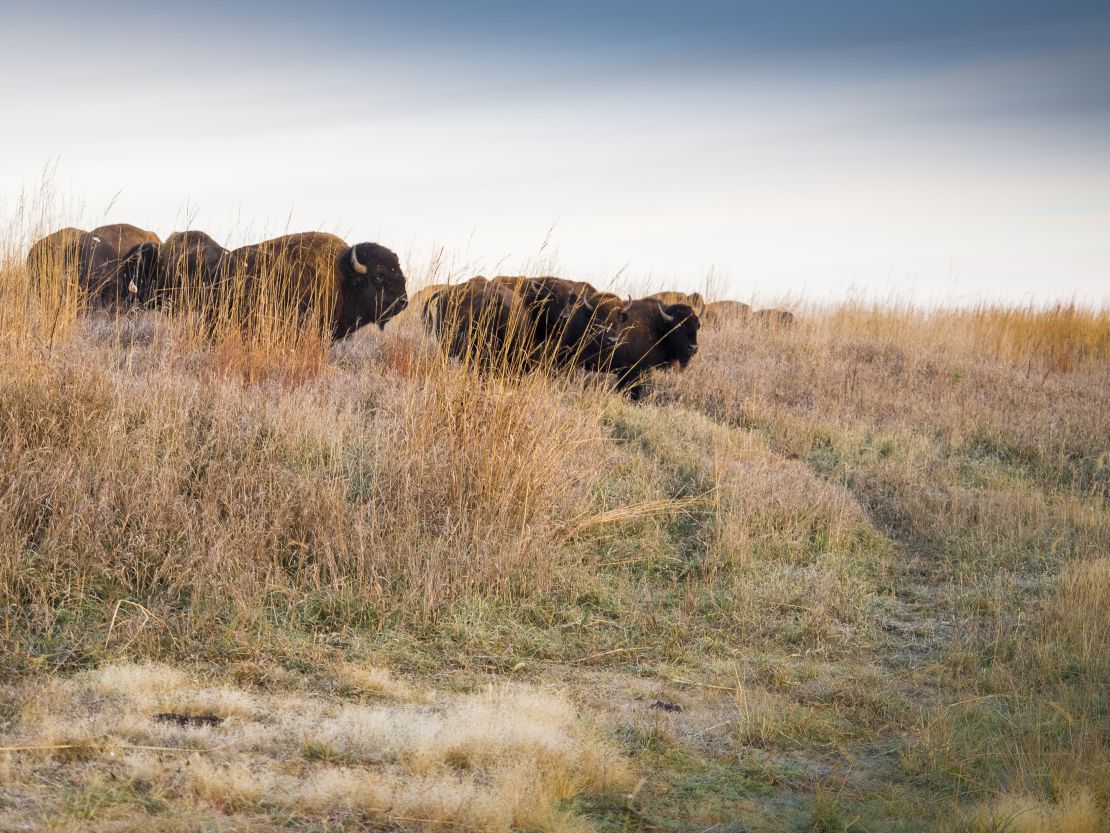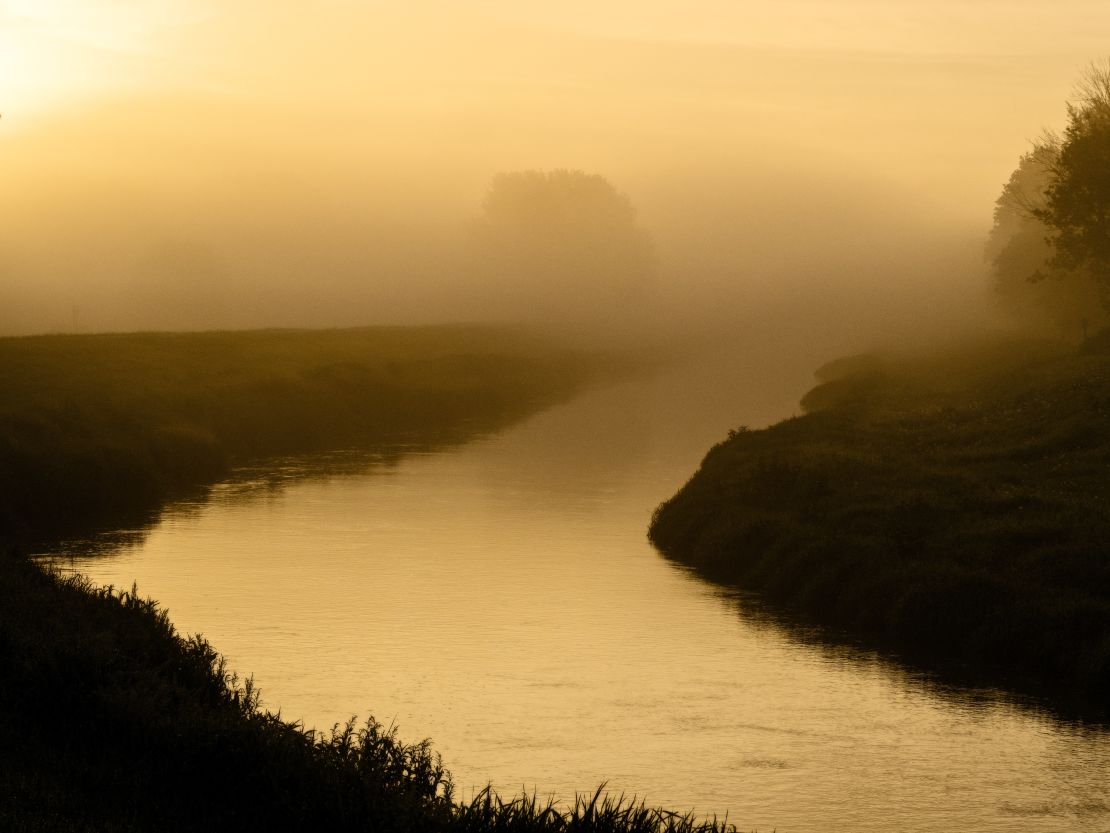Once upon a time, vast expanses of North America were covered in wild prairie, shimmering oceans of grass festooned with wildflowers and teeming with animal life.
Today, less than 15% of tallgrass prairie remains, most of it converted to farmland or lost to development. But as conservationists work to revive this iconic landscape, they are increasingly looking for help from an unusually hairy ally.
Up to 30 million bison once grazed the North American grasslands, shaping their environment in the process. By the start of the 20th century, the continent’s biggest land mammals had been hunted almost out of existence. But scientists say that reintroducing bison can once more shape the grasslands, and help restore the diverse wildlife that makes these environments so special.
“Here in the Midwest of North America the tallgrass prairie is a critically endangered ecosystem. In state of Illinois we’ve lost 99% of it,” says Elizabeth Bach, an ecosystem restoration scientist.
Find out more about Call to Earth and the extraordinary people working for a more sustainable future
“Prairie represents a habitat for a lot of plants, animals, insects and birds that don’t have another habitat to live in,” she tells CNN. “It also represents important cultural heritage. This landscape used to be covered in this type of an ecosystem and it’s still very meaningful for a lot of people who live here, as well as people who would historically would have lived here.”
Bringing back the bison
Bach works for The Nature Conservancy, a US non-profit that protects biodiversity and ecosystems around the world. In 1986 it bought Nachusa Grasslands, an area of prairie and former prairie land in Illinois.

The group started restoring the land conventionally enough, by reintroducing native plants. Then five years ago, it took a more unusual step – re-introducing 110 bison to a third of the 3,500-acre plot.
It’s a technique the group had used on other grasslands and the reasoning behind it is simple: “Prairies have co-evolved with bison,” explains Bach. “It is an ecosystem that depends on grazing disturbance, so folks here brought that dominant grazer back into the system.”
What makets bison such useful grazers is that they are relatively fussy eaters, who, unlike cattle, avoid consuming wildflowers.
Read: Wildlife is flourishing in these DMZs
“Bison essentially are lawnmowers – they prefer to eat grass over anything else,” says Holly Jones, an ecologist at Northern Illinois University, who is researching the impact of bison reintroduction at Nachusa.
That’s especially beneficial in former prairie land, where native wildflowers have often given way to grasses. By eating the grass, bison make space for wildflowers and for the sunlight they need to grow.

But bison do more for the prairie than just cut the grass. “We call them ecosystem engineers, because they have these outsized effects impacting how the ecosystem is shaped,” says Jones.
“Really, they’re just sort of big disturbance machines,” she adds. “One example is their wallowing behavior. It’s one of the coolest things you’ll ever see – this one-ton animal rubbing its back on the ground, and their super short legs look kind of ridiculous, but when they do that they create these huge depressions in the ground without any plants.”
These depressions can provide a habitat for ground-nesting birds and insects, and spring rains can fill the wallows with water, creating temporary ponds that are home to frogs and other amphibians.
Bison manure and urine provide nutrients for prairie plants, and their hoof prints can help oxygen flow into the soil. But the real benefit comes when bison are combined with controlled fires.
‘Fire grazing’
“Bison love to eat in newly burned sites,” says Jones. “Fires burn up a lot of the dead grass that has accumulated and you get kind of a flush of green growth right after a fire that tends to be very nutritious – and the bison know that. They love munching on that fresh green growth.”
Read: She filmed sharks for ‘Jaws’ - then she dedicated her life to protecting them
The idea is that by lighting controlled fires, it’s possible to “guide” bison to graze in certain areas. This creates a diverse patchwork of long and short grass, with each patch acting as a micro habitat suitable for different plants and animals. Each year at Nachusa they burn up to half of the 1,500 acres available to the bison, rotating which areas are burned from one year to the next.
The technical term for this practice is “pyric herbivory” – a phrase coined by Samuel Fuhlendorf, professor of wildlife conservation at Oklahoma State University. Although Fuhlendorf pioneered research into using this kind of “fire grazing” for land management, the concept is not new. “I sort of stole it from Native Americans,” he jokes.

“In the Great Plains, the big grassland area of North America, there are some areas that have lightning strikes but there’s not nearly enough, so for 15,000 years give or take, it was largely Native Americans lighting fires,” he says. “The argument is they lit fires for as many as 70 reasons, but one reason was to attract game, to drive game and manage game. The thought is they were really good at fire management and part of that is a connection with animals like bison.”
Burning grassland might sound like a bad idea at a time when the world must drastically reduce carbon emissions to slow climate change, but grass keeps most its carbon in its roots, safe from the flames.
“Everyone talks about the Amazon as the lungs of the planet, and certainly it produces a lot of our oxygen,” says Jones, “But grasslands are a better and more reliable storage for carbon than trees, partly because they store so much carbon underground, which means storage is resilient to things like wildfires.”
Protecting grasslands
Although the carbon stored by grassland is resilient to wildfires, it is vulnerable to changes in land use. The World Wildlife Fund (WWF) says that in recent years the Great Plains has converted more grasslands to agriculture than the Brazilian Amazon has converted rainforest.

It estimates that between 2009 and 2015, 53 million acres of the Great Plains were converted to cropland – an area half the size of California – releasing a total of 3.2 billion metric tons of carbon dioxide into the atmosphere – the equivalent of having 670 million extra cars on the road.
There are signs that the loss is slowing down: The area converted to cropland fell to 1.7 million acres in 2017, and conservationists say that provisions in the 2018 Farm Bill will help protect remaining grasslands.
When it comes to bison, experts caution that reintroducing them isn’t the right solution for all prairie restoration. Bison are herd animals that need space to roam and putting too many in too small an area can damage an ecosystem. But at Nachusa, although it’s early days, they’re already seeing benefits.
“We’re seeing wallows on the landscape,” says Bach. “In some places we’re seeing a grazing lawn where they’re keeping grass at a short level, in other places we can hardly tell they’re there – and we were hoping for that, to see a diversity of ways bison use the landscape. Having a mixture of all those things on the landscape we think is a healthy thing for the ecosystem.”
This article has been updated to clarify the correct weight of bison, in a quote from Holly Jones.





